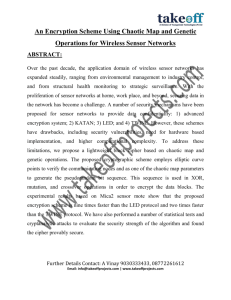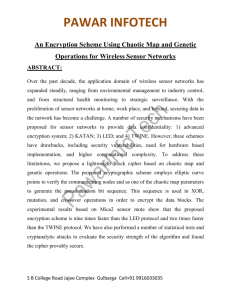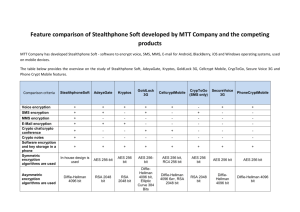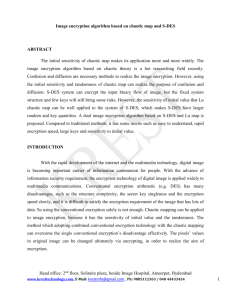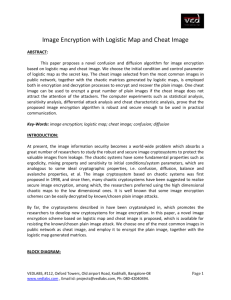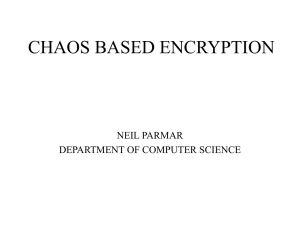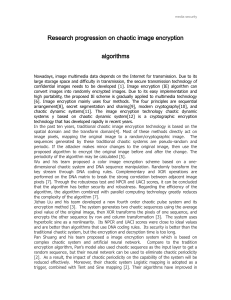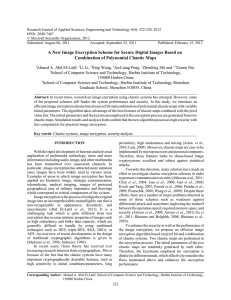Abstract
advertisement
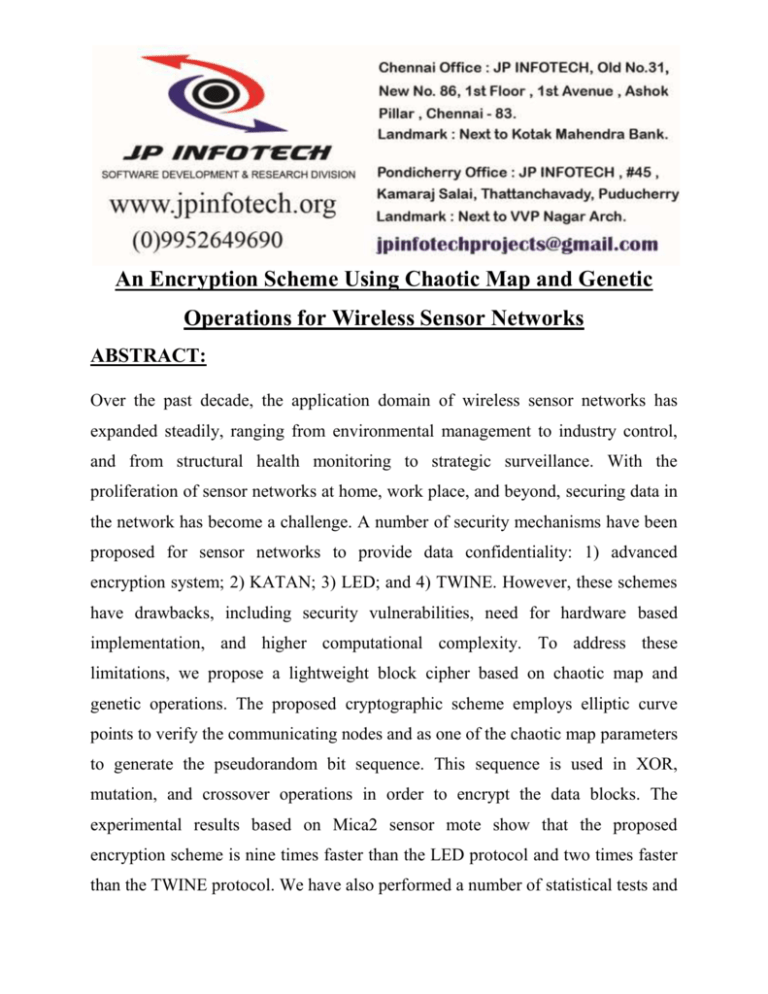
An Encryption Scheme Using Chaotic Map and Genetic Operations for Wireless Sensor Networks ABSTRACT: Over the past decade, the application domain of wireless sensor networks has expanded steadily, ranging from environmental management to industry control, and from structural health monitoring to strategic surveillance. With the proliferation of sensor networks at home, work place, and beyond, securing data in the network has become a challenge. A number of security mechanisms have been proposed for sensor networks to provide data confidentiality: 1) advanced encryption system; 2) KATAN; 3) LED; and 4) TWINE. However, these schemes have drawbacks, including security vulnerabilities, need for hardware based implementation, and higher computational complexity. To address these limitations, we propose a lightweight block cipher based on chaotic map and genetic operations. The proposed cryptographic scheme employs elliptic curve points to verify the communicating nodes and as one of the chaotic map parameters to generate the pseudorandom bit sequence. This sequence is used in XOR, mutation, and crossover operations in order to encrypt the data blocks. The experimental results based on Mica2 sensor mote show that the proposed encryption scheme is nine times faster than the LED protocol and two times faster than the TWINE protocol. We have also performed a number of statistical tests and cryptanalytic attacks to evaluate the security strength of the algorithm and found the cipher provably secure. EXISTING SYSTEM: • The Advanced Encryption System (AES) algorithm is a widely used block cipher based on a substitution-permutation process and has a fixed block size of 128 bits. • It operates on a 4×4 array of bytes and has a key size of 128, 192, or 256 bits. However, AES running on 10, 12, and 14 rounds for 128, 192, and 256bits key respectively is still found vulnerable by the researchers. • In addition to security issues, AES is mainly not suitable for WSNs due to the demand for more hardware resources. • KATAN and KTANTAN are two block ciphers proposed. Both ciphers use blocks of sizes 32, 48 or 64 bits under 80 bits key and iterate for 254 rounds. • The main difference between KATAN and KTANTAN is the key scheduling scheme. • The 80 bits key in KATAN is loaded into a register and is repeatedly clocked, whereas in KTANTAN the key is fixed. DISADVANTAGES OF EXISTING SYSTEM: • AES is not suitable for WSN • KATAN and KTANTAN algorithms are more expensive • Memory consumption PROPOSED SYSTEM: • The proposed scheme includes a number of benefits: i) it uses the discrete chaotic map, which supports a wider data range with low computational cost. Most of the encryption schemes use fixed chaotic map parameters to generate the random bit sequences, but our algorithm uses random values of ‘x’ and ‘y’ for every session generated by elliptic curve operations; ii) the proposed crypto-system makes different pseudorandom bit sequences for every session and thus preserves independent behavioral characteristics of the algorithm; iii) the scheme is more efficient compared to SkipJack, Advanced Encryption System (AES), LED, TWINE, and Block Cipher based on Chaos (BCC) in terms of CPU consumption and encryption time; iv) the proposed encryption algorithm is suitable for both text and image encryption. From the application point of view, it is desirable for the crypto-system to protect confidential information not only in text form but also in image form. Image data differ from text due to intrinsic features, such as strong correlation between adjacent pixels and high redundancy. ADVANTAGES OF PROPOSED SYSTEM: • Reduce the memory consumption and energy consumption • Proposed encryption algorithm is suitable for both text and image encryption • Provide more security SYSTEM ARCHITECTURE BLOCK DIAGRAM Chaotic map and genetic operations Discrete chaotic map Supports wider data range Use crypto-system Make pseudorandom sequence Robust block cipher Used to both text and image data encryption SYSTEM REQUIREMENTS: HARDWARE REQUIREMENTS: System : Pentium IV 2.4 GHz. Hard Disk : 40 GB. Floppy Drive : 1.44 Mb. Monitor : 15 VGA Colour. Mouse : Logitech. Ram : 512 Mb. SOFTWARE REQUIREMENTS: Operating system : Windows XP/7/LINUX. Implementation : NS2 NS2 Version : NS2.2.28 Front End : OTCL (Object Oriented Tool Command Language) Tool : Cygwin (To simulate in Windows OS) REFERENCE: Kamanashis Biswas, Vallipuram Muthukkumarasamy, and Kalvinder Singh, “An Encryption Scheme Using Chaotic Map and Genetic Operations for Wireless Sensor Networks”, IEEE SENSORS JOURNAL, VOL. 15, NO. 5, MAY 2015
